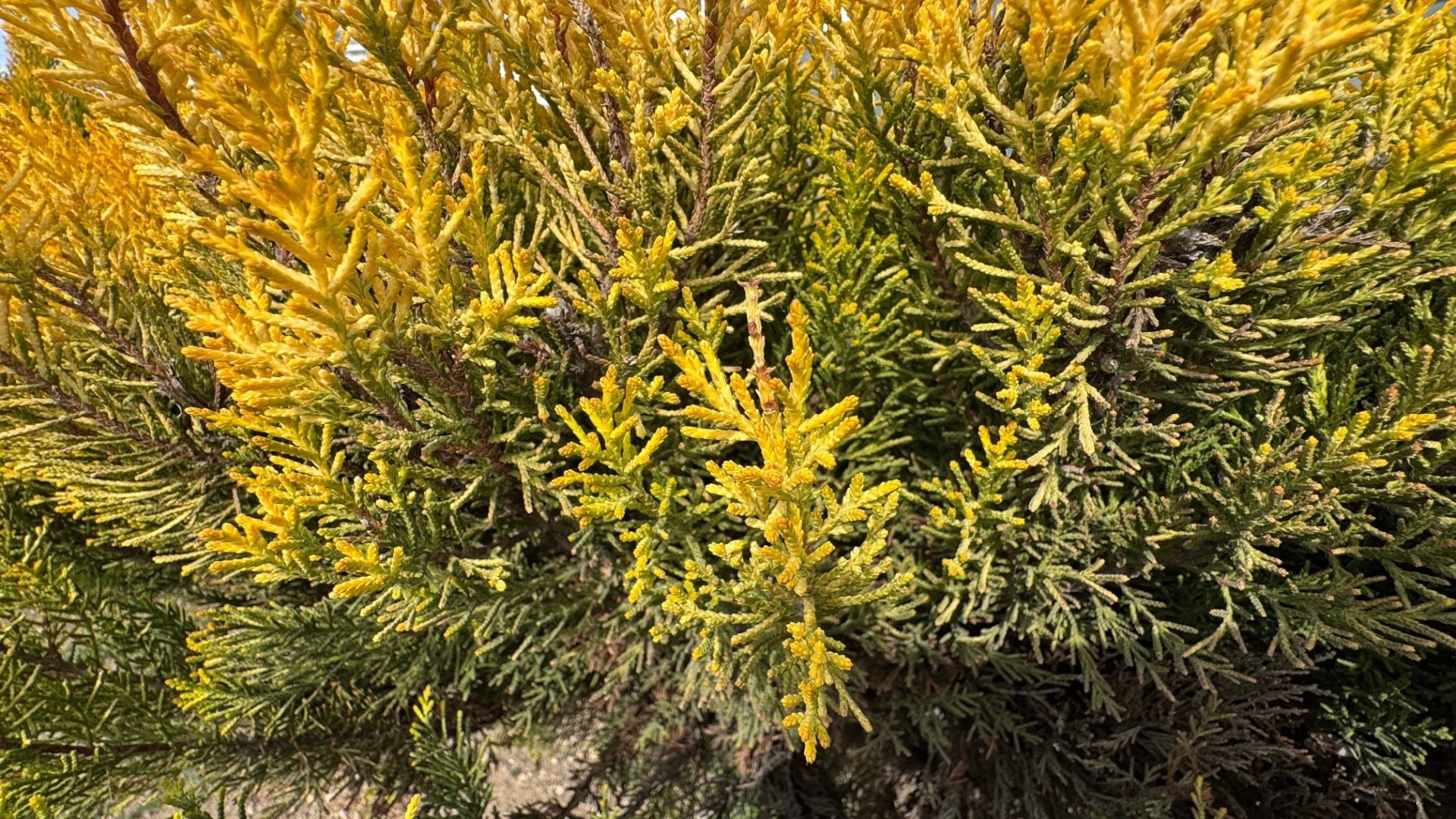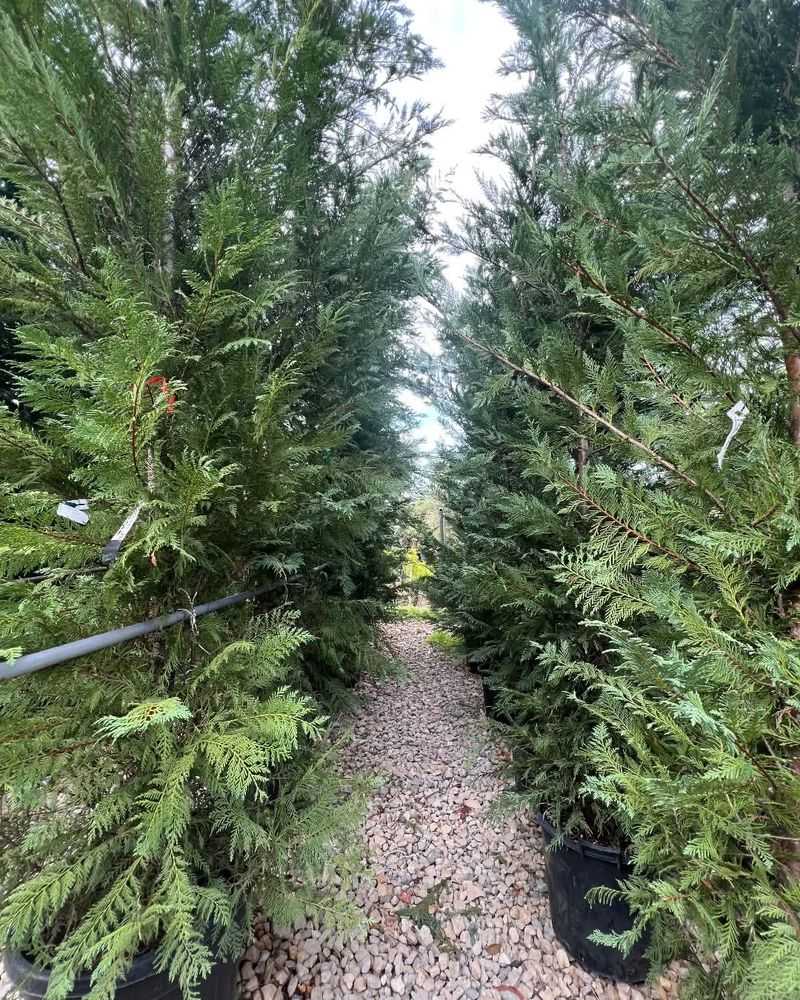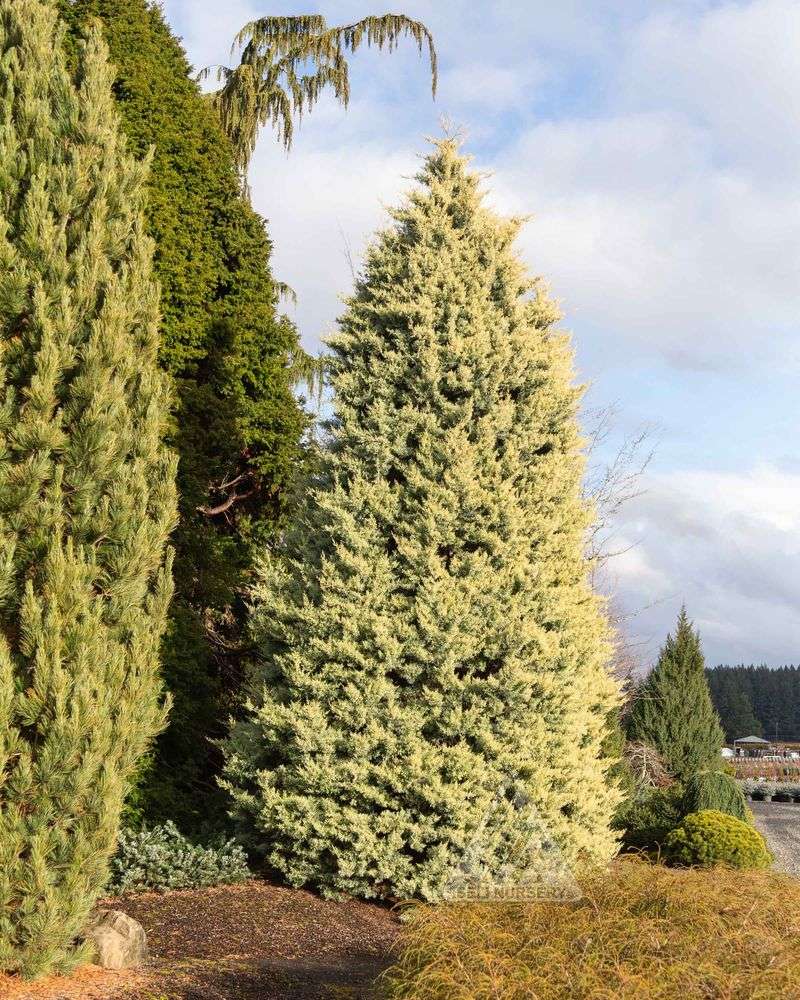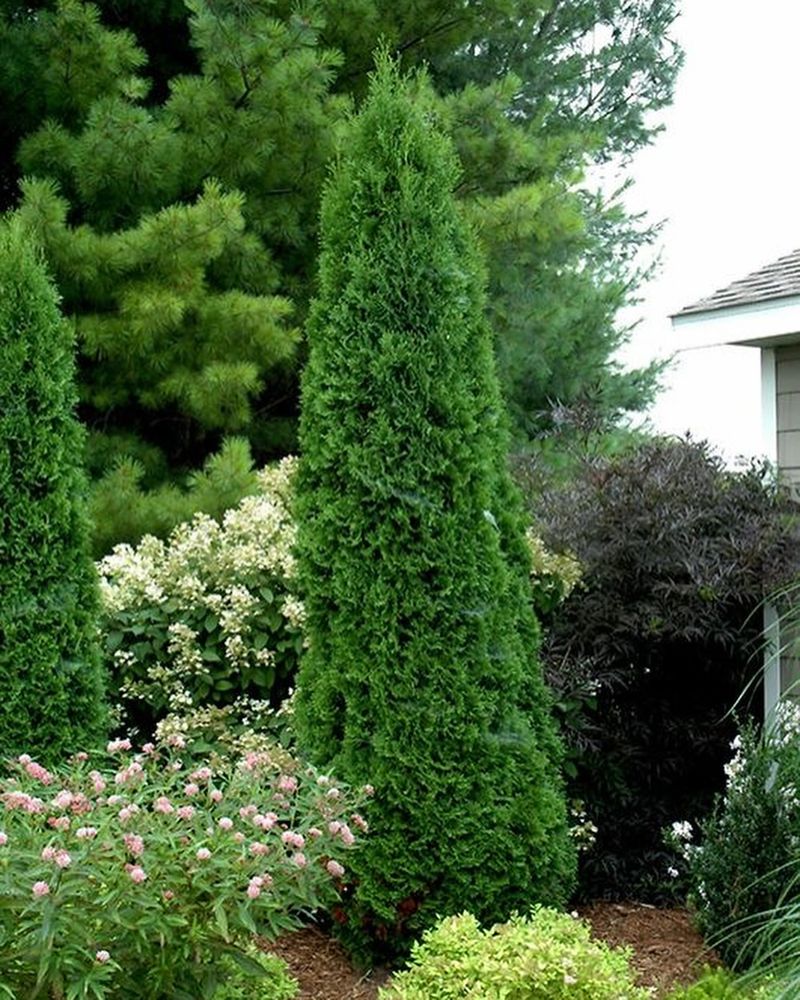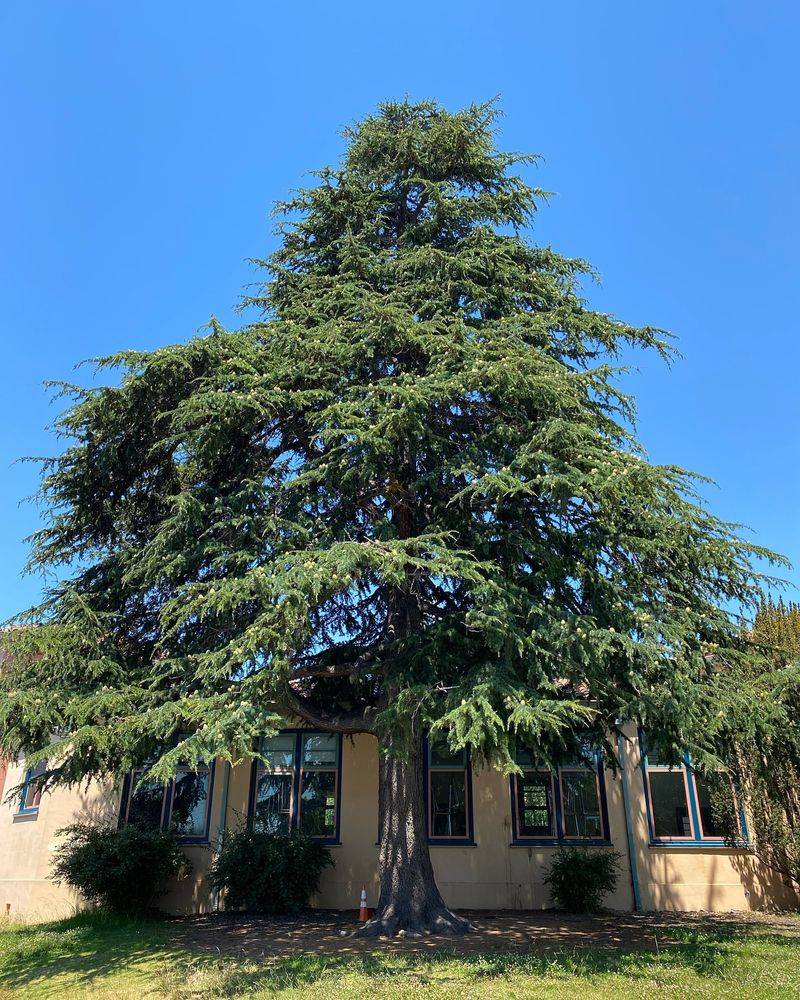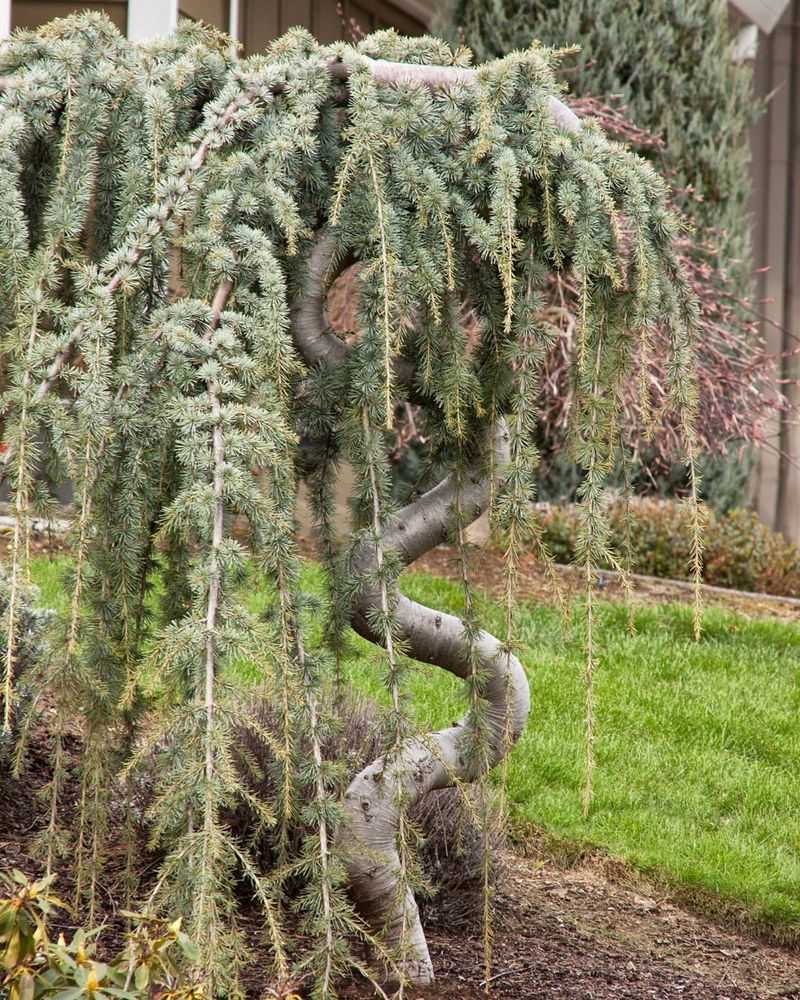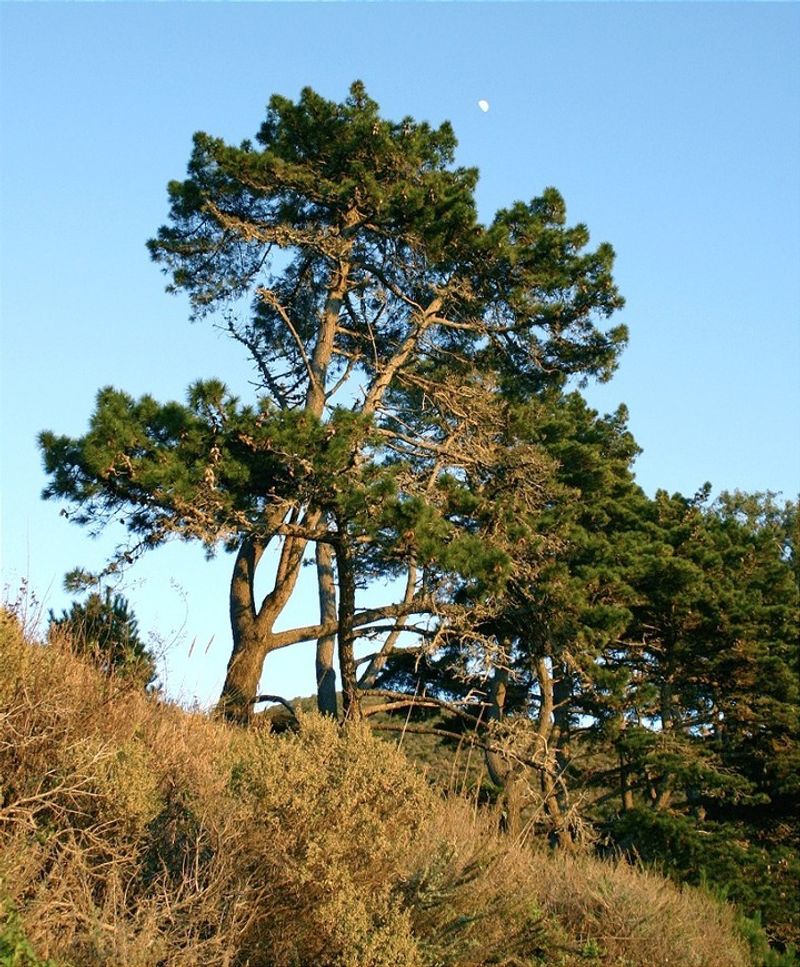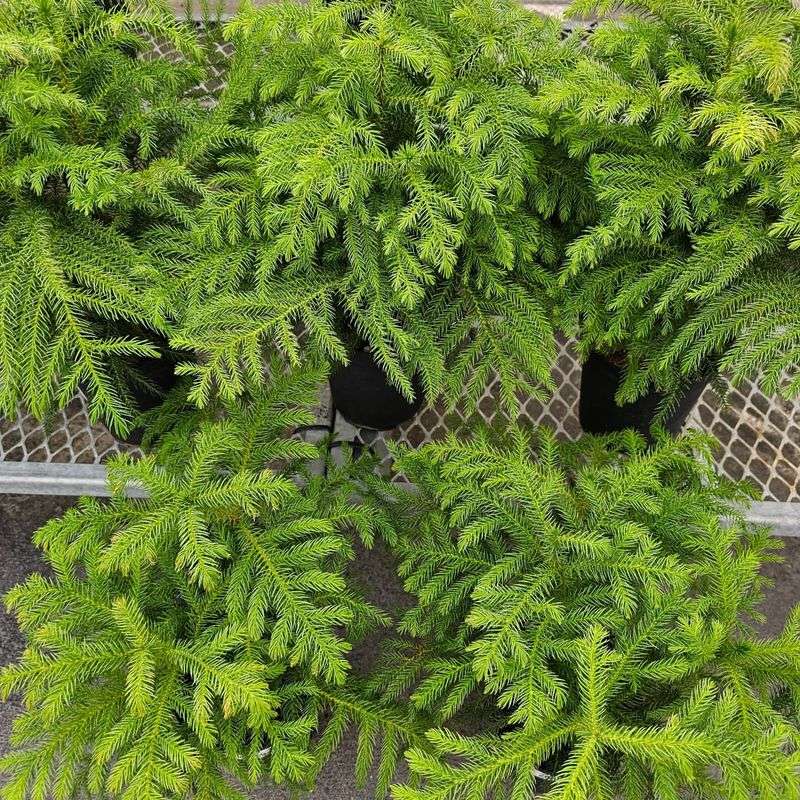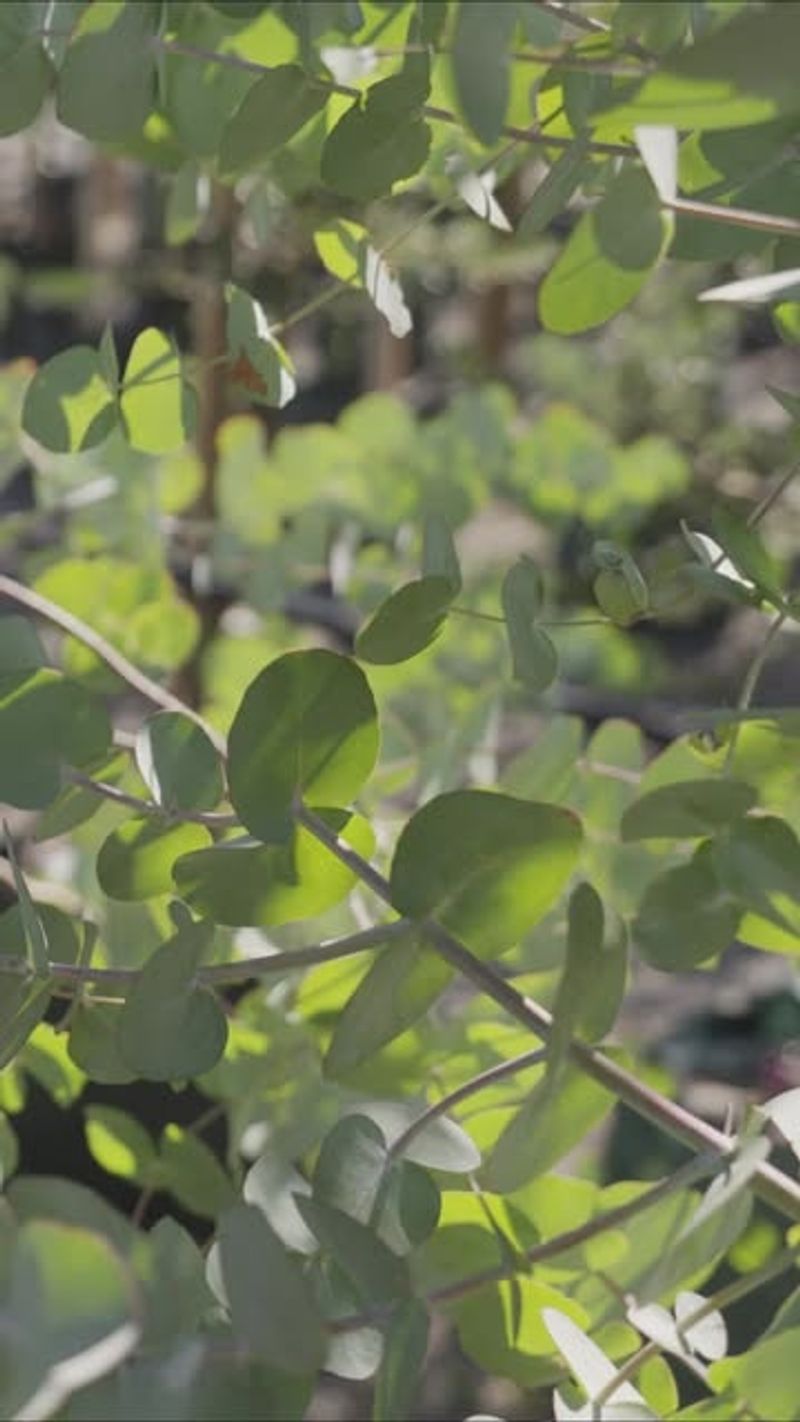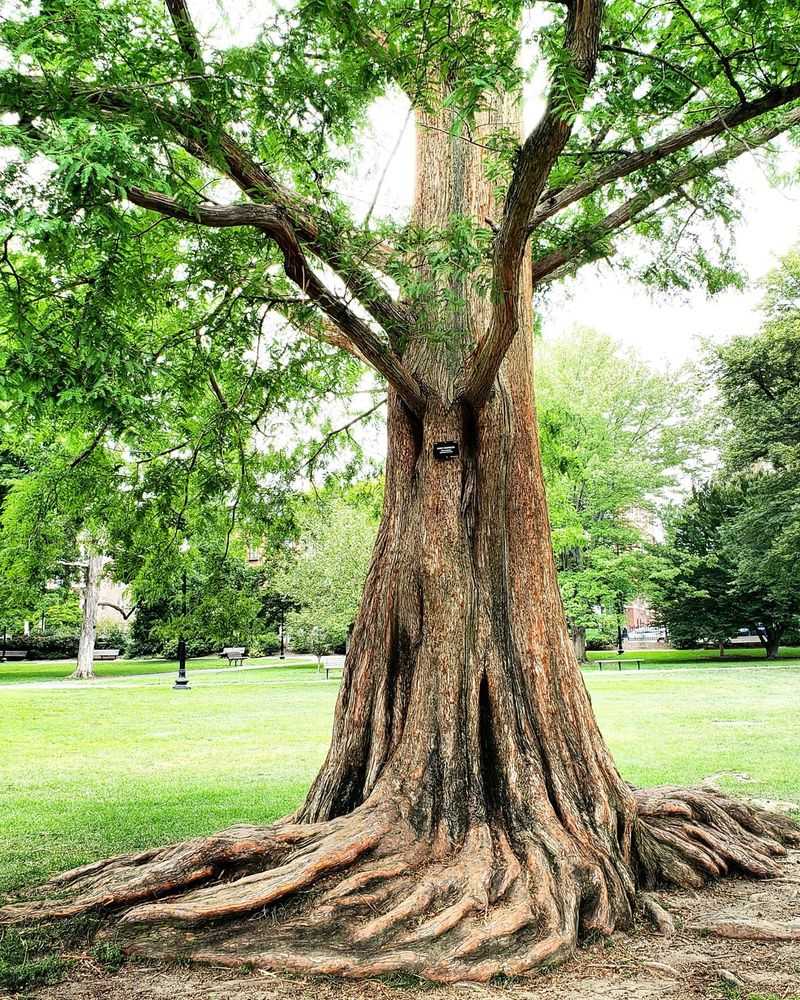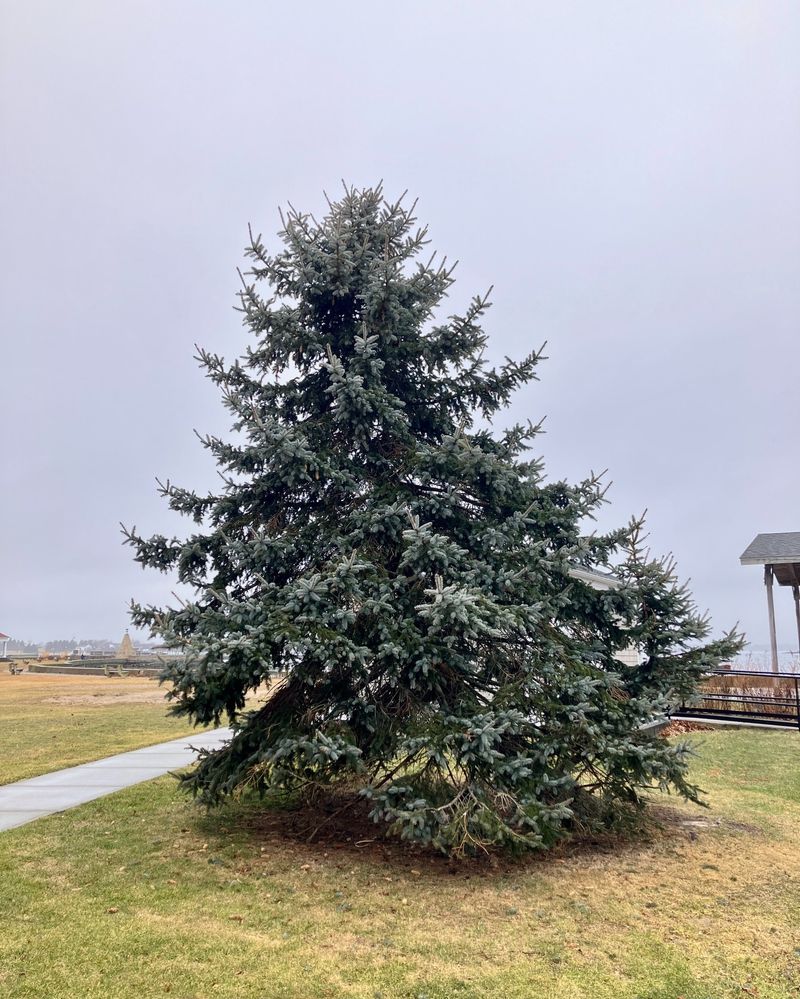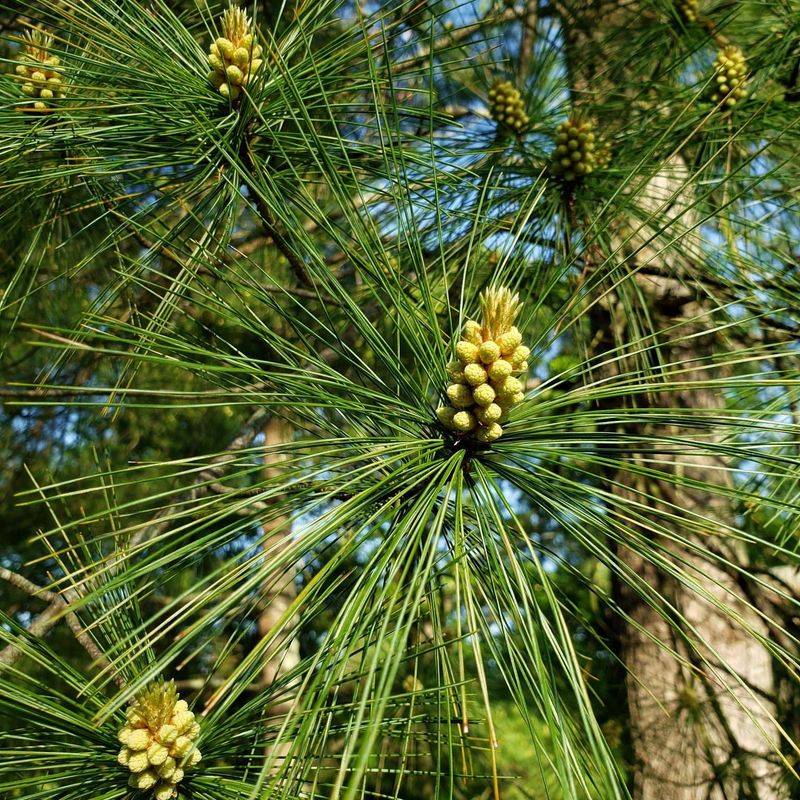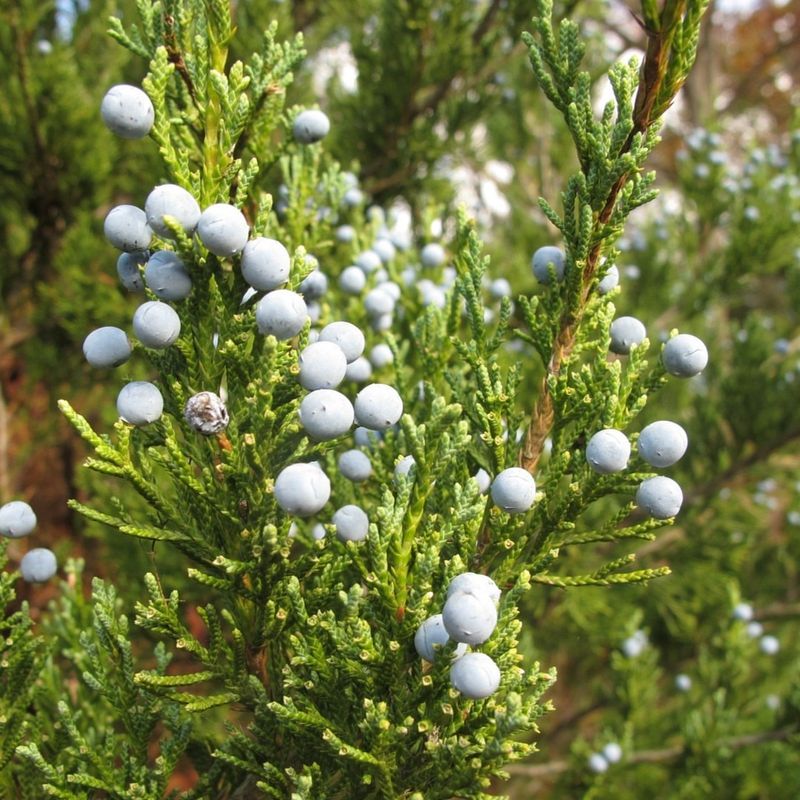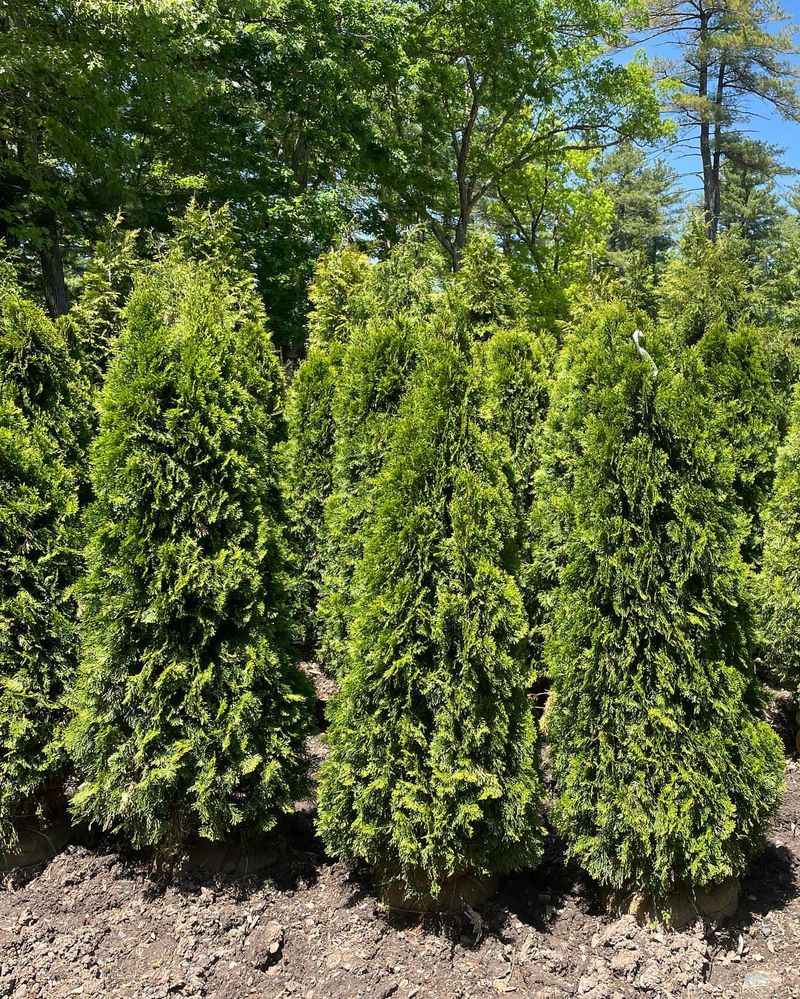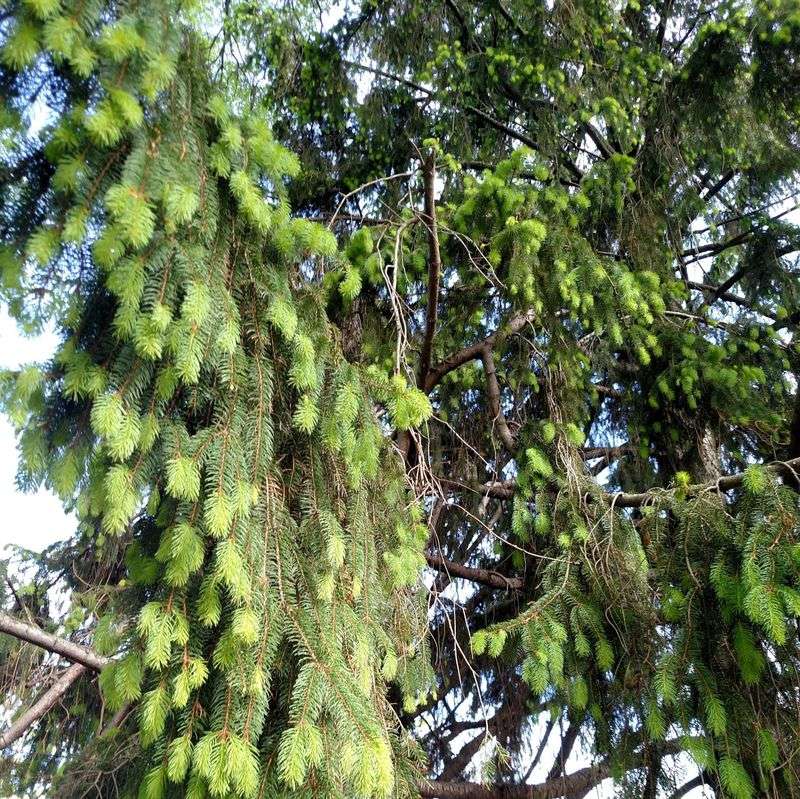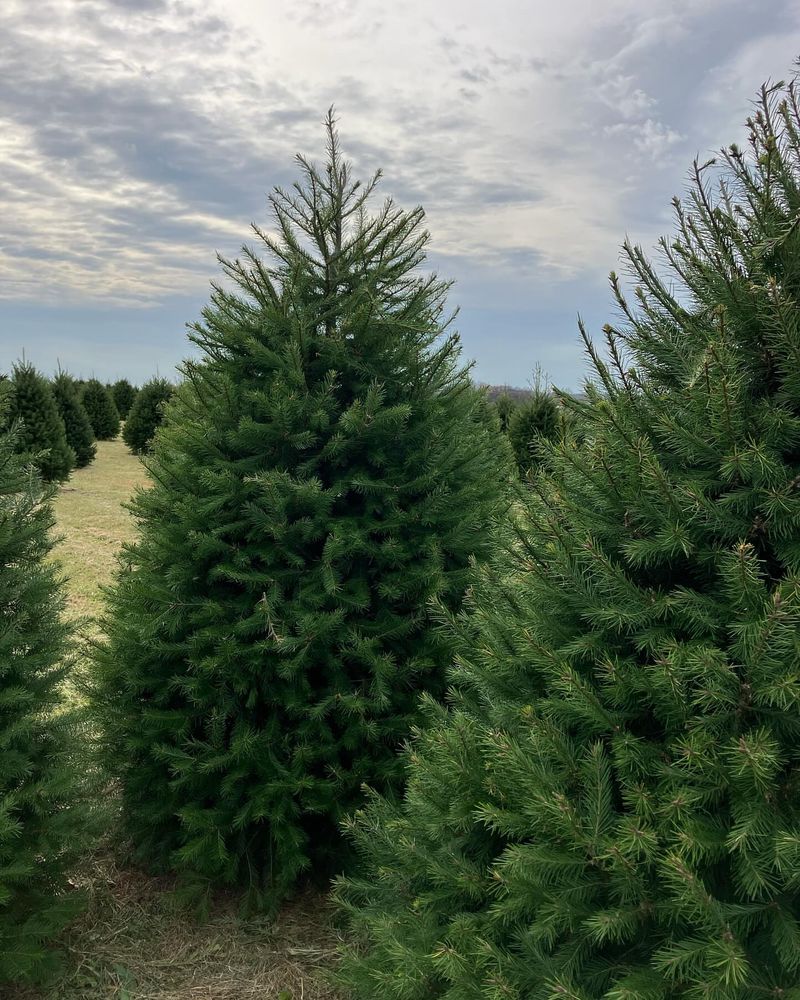Not all evergreen trees are suited to Illinois landscapes. Some struggle with harsh winters, others become invasive, and many simply fail to thrive in the region’s heavy soils and unpredictable weather.
Choosing the wrong species can lead to costly removal, pest issues, and long-term damage to your yard. Native and well-adapted alternatives offer year-round beauty without the headaches—saving time, money, and effort in the long run.
Selecting the right evergreen makes all the difference in building a healthy, resilient landscape.
1. Leyland Cypress: The Fast-Growing Mistake
Leyland Cypress trees grow incredibly fast, which seems great until you realize they’re highly susceptible to Illinois winter damage. Their branches often snap under heavy snow and ice loads.
The shallow root system makes them prone to toppling during our strong Midwestern winds. Plus, these trees frequently develop fatal canker diseases in our climate, leaving homeowners with ugly, dying specimens.
2. Arizona Cypress: Desert Tree in Prairie State
Native to the southwestern deserts, Arizona Cypress simply can’t handle Illinois humidity. Summer moisture leads to devastating fungal problems that cause branch dieback and eventual death.
The tree’s natural drought adaptations backfire in our climate – needles turn brown during wet periods rather than drought. Many Illinois gardeners waste money replacing these trees repeatedly before giving up entirely.
3. Italian Cypress: Mediterranean Misfit
Those elegant, columnar Italian Cypress trees you admired on your European vacation? They’re Mediterranean natives that absolutely hate Illinois winters. Temperatures below 10°F cause severe damage or death.
Even if they survive winter, they struggle with our summer humidity. The combination stresses the trees, making them susceptible to spider mites and canker diseases that ultimately kill them.
4. Deodar Cedar: Himalayan Heartbreak
Deodar Cedars look magnificent in warmer climates but suffer terribly in Illinois. Their elegant, weeping branches collect ice and snow, leading to permanent disfigurement and breakage.
Young trees might survive a few years, fooling homeowners into thinking they’re established. Then a particularly harsh winter strikes and kills them completely. Even in protected locations, they rarely reach their potential in our state.
5. Blue Atlas Cedar: Beautiful but Doomed
The stunning blue-gray needles of Atlas Cedar make it tempting for Illinois gardeners. Unfortunately, this North African native simply can’t handle our temperature extremes. Winter burn frequently damages the foliage, turning those beautiful blue needles brown.
The tree never fully recovers its appearance. Root systems also struggle in our heavy clay soils, further limiting growth and making the tree susceptible to disease.
6. Monterey Pine: California Dreaming
Monterey Pines thrive along California’s foggy coast but fail miserably in Illinois. Our cold winters and hot, humid summers create a deadly combination for these West Coast natives. Needle diseases run rampant in our climate, causing unsightly brown patches.
The trees rarely live more than a decade here before succumbing to environmental stress. Save yourself the heartache and choose something better suited to the Midwest.
7. Norfolk Island Pine: Indoor Only, Please
Often sold as living Christmas trees, Norfolk Island Pines trick many Illinois residents into thinking they can be planted outdoors. Don’t be fooled! These tropical trees die at temperatures below 35°F. Even as houseplants, they struggle with our dry winter indoor air.
Many homeowners watch their Norfolk Island Pines drop branches and slowly decline. Keep them as temporary indoor decorations only or avoid them altogether.
8. Eucalyptus: Aromatic Australian Failure
Technically not all eucalyptus are evergreens, but the evergreen varieties sold as ornamentals are particularly ill-suited for Illinois. Their oils freeze in our winter temperatures, causing cell rupture and death. Some varieties might survive a mild winter only to die in the next cold snap.
The trees also drop limbs dangerously during ice storms. Despite their wonderful fragrance and interesting foliage, they’re a risky investment in our climate.
9. Dawn Redwood: Deciduous Deceiver
Many nurseries market Dawn Redwoods as evergreens, but surprise! They’re actually deciduous conifers that drop their needles each winter. First-time buyers often panic when their “evergreen” turns brown in fall. While they can grow in Illinois, they don’t provide the year-round screening many homeowners want.
Their massive size (potentially 100+ feet tall) also makes them problematic for average yards. Choose a true evergreen instead if winter privacy is your goal.
10. Colorado Blue Spruce: Diseased Beauty
Despite being commonly planted, Colorado Blue Spruce struggles in Illinois. These mountain natives develop numerous fungal problems in our humid climate, particularly Rhizosphaera needle cast and Cytospora canker.
After about 15-20 years, most Blue Spruces in Illinois look ragged with dead lower branches and thinning foliage. The beautiful blue color that sold you on the tree gradually disappears as it declines. Long-term success with these trees is rare in our state.
11. Eastern White Pine: Towering Trouble
Eastern White Pines are native to parts of Illinois but perform poorly in urban and suburban settings. Salt spray from winter roads damages needles, causing browning and dieback along highways and driveways.
White pine blister rust and white pine weevil frequently attack these trees in landscape settings. They also grow enormously tall (80+ feet), making them too large for most modern yards. Their soft wood breaks easily in ice storms, creating hazards near homes.
12. Better Alternative: Eastern Red Cedar
Native to Illinois, Eastern Red Cedar thrives in our challenging climate. These hardy evergreens handle both drought and cold with minimal care, developing deep roots that prevent toppling in storms. Their dense foliage provides excellent screening and wildlife habitat.
Available in many cultivars with different shapes and sizes, you can find one perfect for any landscape need. The aromatic wood naturally repels moths and other pests, adding practical benefits.
13. Better Alternative: American Arborvitae
American Arborvitae offers reliable evergreen screening without the problems of non-native species. These adaptable trees handle Illinois winters beautifully, maintaining their green color year-round. Newer cultivars like ‘Techny’ and ‘Green Giant’ resist deer browsing better than older varieties.
They grow moderately fast without becoming unmanageable. Their natural pyramid shape requires minimal pruning, making them low-maintenance options for busy homeowners.
14. Better Alternative: Norway Spruce
Norway Spruce outperforms Colorado Blue Spruce in Illinois landscapes. Its resistance to needle cast diseases means it maintains a fuller appearance throughout its life. The distinctive drooping branchlets create interesting winter texture.
These trees tolerate urban pollution better than many other evergreens. With moderate growth rates and eventual heights of 40-60 feet, they’re substantial without overwhelming average properties.
15. Better Alternative: Concolor Fir
Concolor Fir (White Fir) offers blue-green color similar to Colorado Spruce but with better disease resistance in Illinois. The soft needles emit a pleasant citrus scent when crushed, adding sensory appeal to your landscape.
Unlike many other firs, Concolor tolerates our hot, humid summers while still handling cold winters. It grows with a naturally symmetrical, pyramidal shape that requires minimal correction pruning. For Christmas tree enthusiasts, it also makes an excellent living holiday tree.

